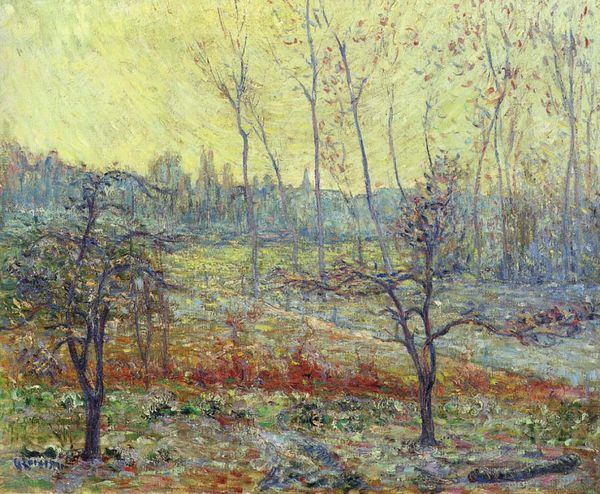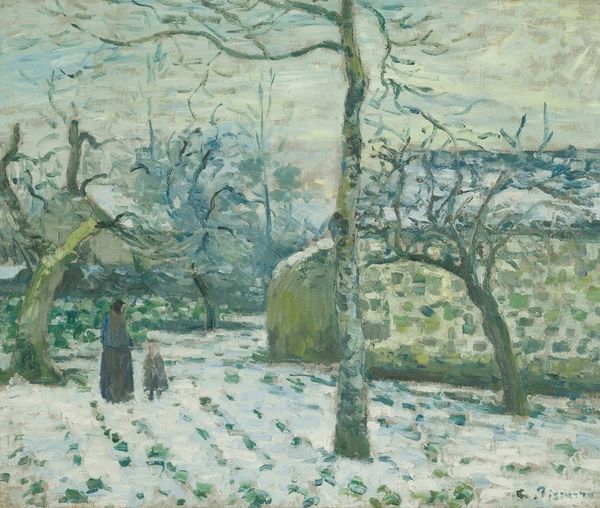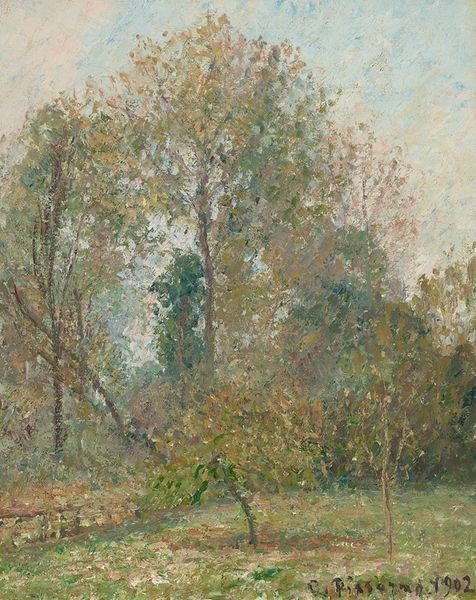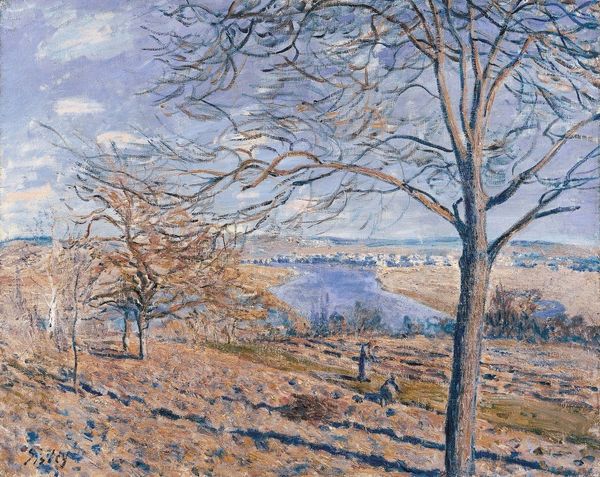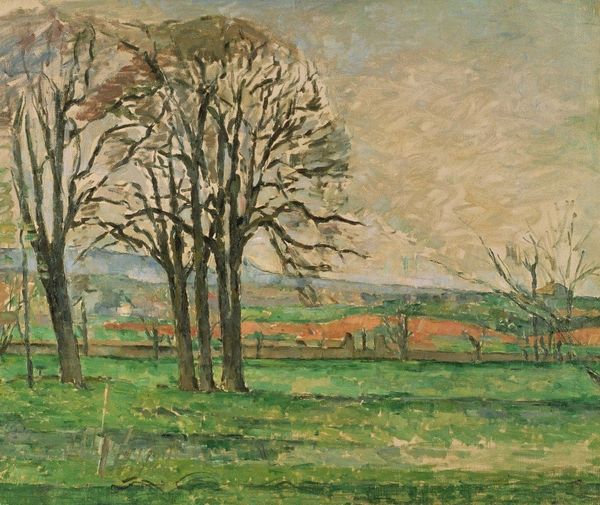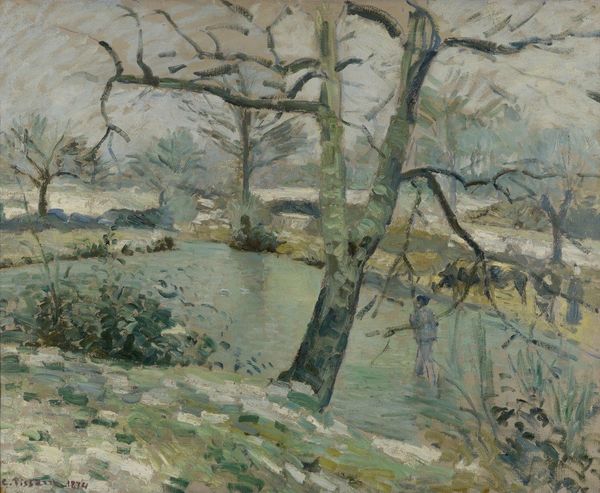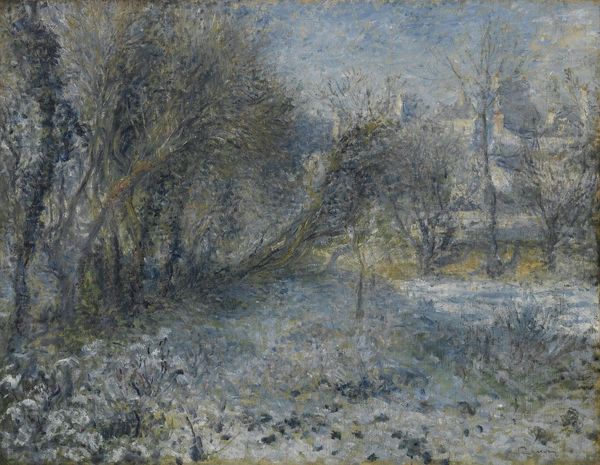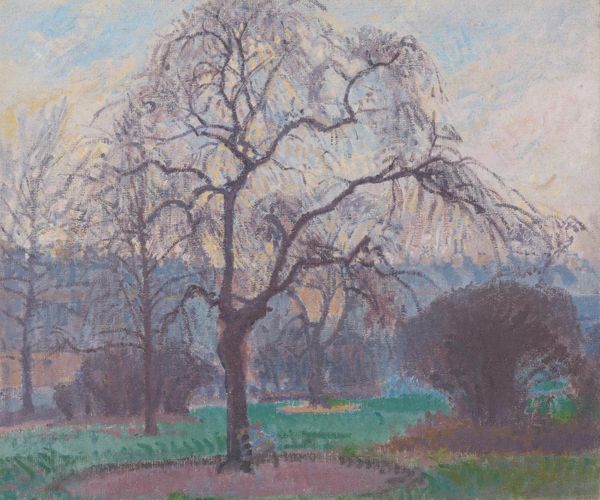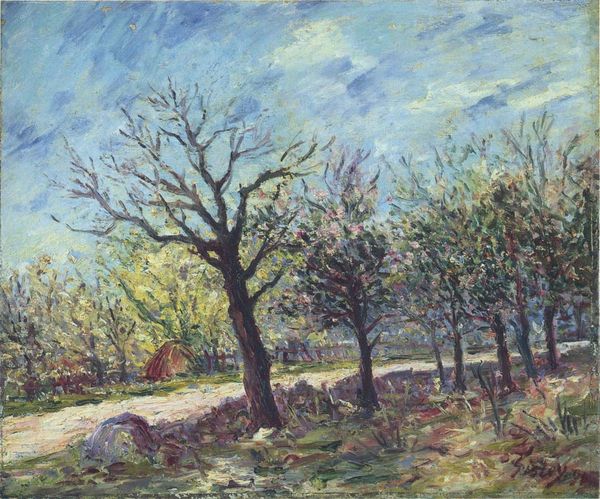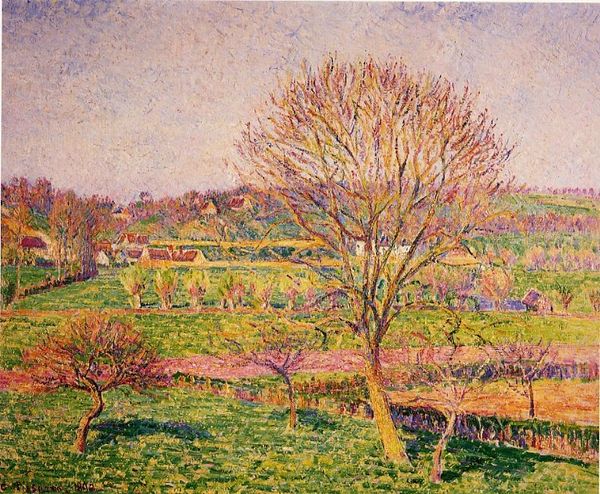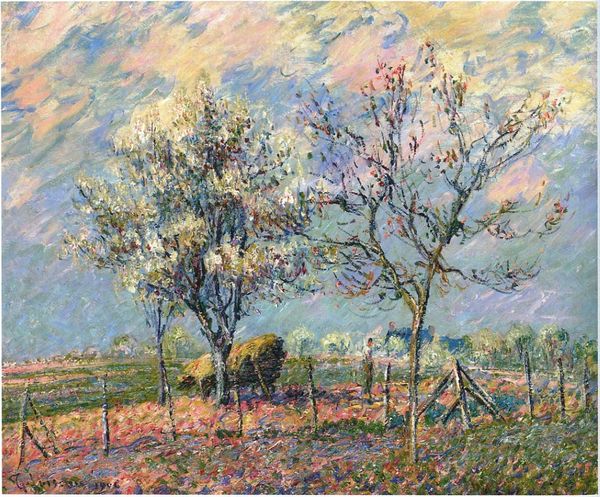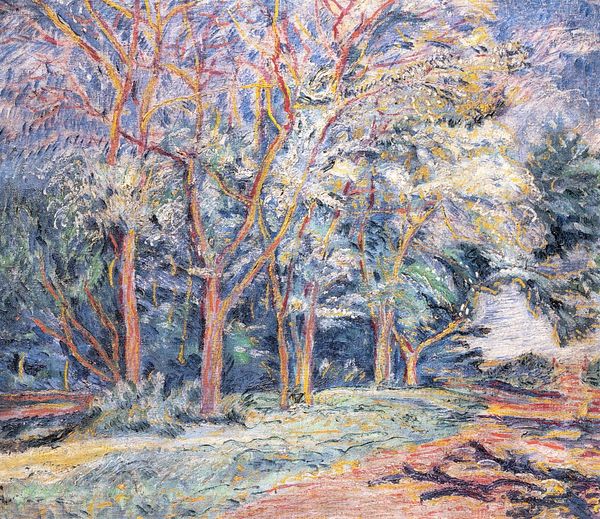
Copyright: Public Domain: Artvee
Editor: Here we have Camille Pissarro's "Le Grand Noyer, Gelée Blanche Éragny," painted in 1892 using oil on canvas. The first thing that strikes me is how the starkness of winter is rendered with such delicate, almost warm, colours. What can you tell me about how Pissarro might have been engaging with the political and social context of the time? Curator: That's an astute observation. Consider the backdrop against which Pissarro was working. This was a period of immense social upheaval, growing urbanization, and anxieties around class and labour. Pissarro, being politically engaged with anarchist circles, often depicted rural life not as an idyllic escape, but with an awareness of its own complexities. He shows Éragny's great walnut tree laden with frost. It seems devoid of people, almost frozen in time, but it exists in relation to the distant little houses. How does this juxtaposition, the 'grand noyer' with a simple 'maison' backdrop, resonate with you in light of Pissarro's political views? Editor: It feels like he’s subtly acknowledging the quiet endurance of the working class and the land itself, amidst all the societal shifts happening around them. Curator: Exactly! He is not glorifying rural life uncritically. He brings to bear the material conditions and celebrates ordinary life outside of Paris's cultural milieu. This artwork becomes an active participant in a wider discourse about representation, class, and the changing landscape of France. This reflects his dedication to challenging the established social and artistic norms. It asks us to contemplate our relationship with nature, community, and the silent narratives embedded within seemingly simple landscapes. Editor: I now view Pissarro’s landscapes with a completely new lens; I see his work now as a voice. Curator: Precisely, and it shows how looking beyond formal aesthetics lets us appreciate the power of his social vision.
Comments
No comments
Be the first to comment and join the conversation on the ultimate creative platform.
